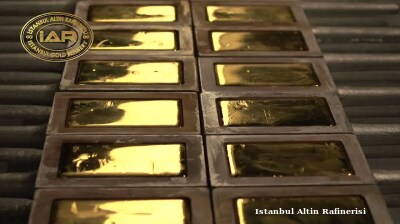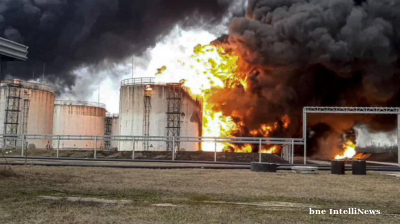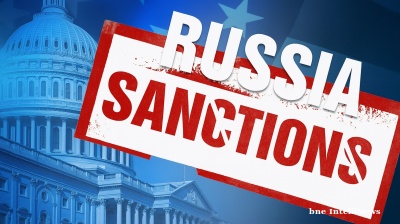The Russian automotive sector is showing signs of systemic failure. After a brief post-crisis rebound in 2023 (+69%) and 2024 (+48%), the market has sharply reversed course in 2025, revealing deep-rooted vulnerabilities that go well beyond a typical downturn as Russia’s economic problems get worse this year. (chart)
With falling new car sales, ballooning loan defaults, factory slowdowns and a rapid shift to older vehicles, the industry is struggling to maintain even a semblance of stability.
“Falling sales, rising auto loan delinquencies, reduced workweeks at factories, dealership closures, and an aging car fleet are not temporary disruptions but organic manifestations of an industry losing technological complexity, diversity, export potential, and development prospects,” said Vakhtang Partsvania, Economist and Professor of Management at Caucasus University, in a recent paper for Riddle.
Sales of new cars fell by 11% year-on-year in July to 121,000 units, while total sales from January to July dropped 24%, according to data from the Association of European Businesses and Autostat. Industry-wide forecasts suggest a contraction of around 20% for 2025. Domestic production may reach just 600,000 units—less than one-fifth of Russia’s installed capacity of 3 million vehicles.
Mounting unsold inventory is creating a glut: around 500,000 vehicles now sit in dealer warehouses, a significant portion of them Chinese brands. At the same time, auto loan delinquencies have surged 85% year-on-year, reaching RUB32bn ($387mn), with 4% of loans more than 90 days overdue. New loan issuance has fallen by nearly 50%.
“The crisis is not only cyclical but also structural, with consequences extending far beyond the current downturn,” Partsvania said.
Even major producers are scaling back operations. KamAZ and GAZ have both reduced workweeks, while AvtoVAZ is reportedly considering the same. Component shortages and low localisation continue to hinder production. “Even the most ‘import-substituted’ model, the Lada Granta, is only 46% localised,” Partsvania noted, with the industry average standing at just 33% in 2024.
The dominance of Chinese brands adds a second layer of pressure. In 2024, Chinese companies accounted for 60% of new car sales and 77% of all imports—a figure that could reach 90% by the end of 2025. “Chinese brands quickly occupied the vacant niche, but not by establishing full-fledged production in Russia,” Partsvania explained. Instead, they rely on importing finished vehicles or simple knock-down kits, creating an ecosystem of low-value assembly work.
“Without supplies from China, even current production volumes cannot be sustained,” he said. “And Chinese companies engage in aggressive price competition, displacing Russian players from their own market.”
Government interventions have proved ineffective or counterproductive. A steep rise in the recycling fee intended to encourage localisation instead led to a surge in Chinese imports before the hike, followed by widespread discounting to clear excess stock. This, in turn, forced AvtoVAZ to slash its production plan and request emergency state support.
Attempts at technological independence are faltering. “Joint platforms with European, American, Japanese, and South Korean automakers have been shut down,” said Partsvania. “Multibillion-dollar Western investments have been cancelled, and the model range available to Russian buyers has sharply contracted.”
While global carmakers push into electrification, automation and AI, Russia’s automotive sector is being simplified into a low-tech, domestically confined market. “Behind the façade lies technological stagnation,” Partsvania warned, adding that the industry is becoming reliant on one external supplier—China—without access to its most advanced technology.
“No factors are visible on the horizon that could quickly change the situation,” he concluded.
Riddle is an independent media outlet focusing on independent analysis of Russia and a bne IntelliNews media partner. Follow on Twitter @RiddleRussia
Features

BEYOND THE BOSPORUS: Prosecutors make move on “fictitious export schemes” of Istanbul Gold Refinery
Observers point to intra-regime gangs seizing each other’s wealth, remember Erdogan’s “Hello Fatih” phone calls and ponder whether wanted man Turgay Ciner is in London.

Taliban visit to India upsets Pakistan, signals New Delhi's changing Afghan posture
Coinciding with the visit, Pakistan conducted military operations inside Afghanistan, followed by airstrikes on multiple border towns. Retaliation against Pakistan's police training facilities and border outposts followed.

Pakistan’s India-shaped chip on the shoulder, and why a peaceful coexistence is as elusive as ever
Pakistan must first redefine how it sees India - not solely as a threat to be contained but as a neighbour with whom coexistence is unavoidable. That psychological leap has eluded generations of Pakistani leaders.

Trump shocked by China’s move on rare earths, threatens more 100% tariffs
"Some very strange things are happening in China!" Trump wrote in a post on his Truth Social account on October 10, adding "They are becoming very hostile."




